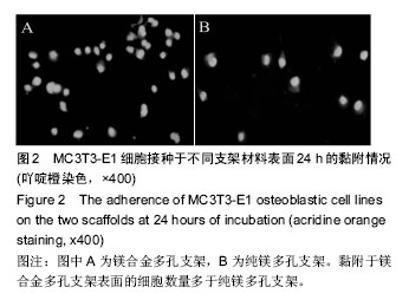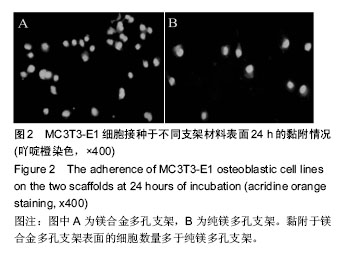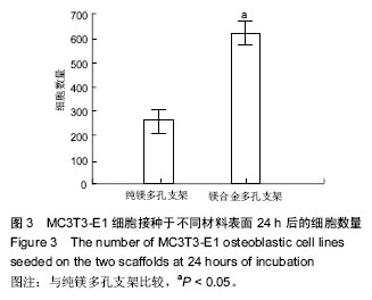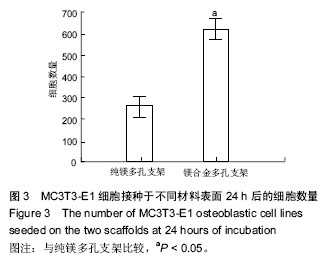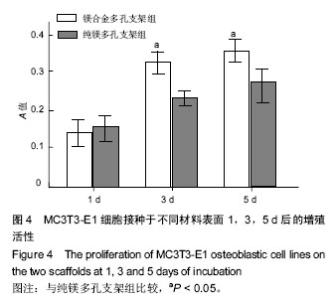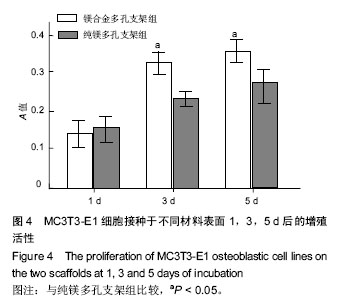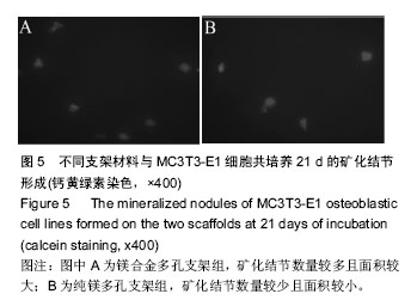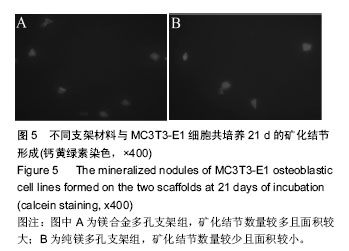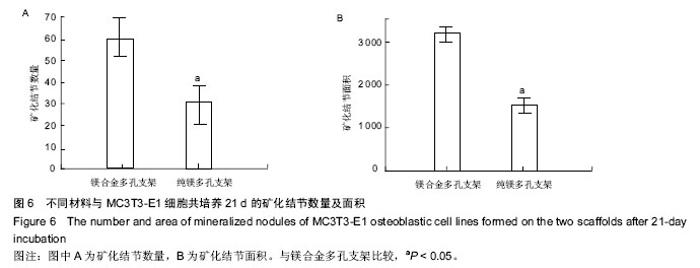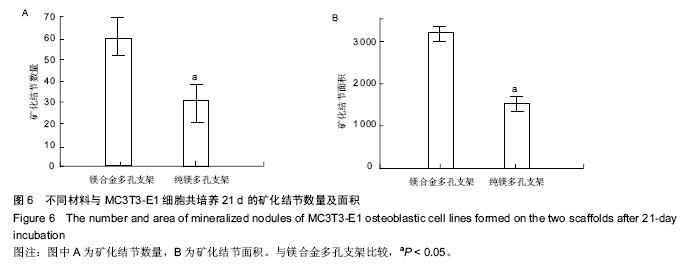| [1] Black CR,Goriainov V,Gibbs D,et al.Bone tissue engineering. Curr Mol Biol Rep.2015; 1(3):132-140.
[2] Tang D,Tare RS,Yang LY,et al.Biofabrication of bone tissue: approaches, challenges and translation for bone regeneration.Biomaterials. 2016;83:363-382.
[3] 胡金龙.组织工程学技术治疗骨缺损的最新研究进展[J].中国矫形外科杂志,2013,21(2):150-153.
[4] Ryan G,Pandit A,Apatsidis DP.Fabrication methods of porous metals for use in orthopaedic applications. Biomaterials.2006;27(13):2651-2670.
[5] Moreno M,Amaral MH,Sousa Lobo JM,et al.Scaffolds for bone regeneration: state of the art.Curr Pharm Des.2016.[Epub ahead of print].
[6] 徐大朋骨组织工程支架研究进展[J].中国实用口腔科杂志,2014,7(3):177-181.
[7] Burg KJ,Porter S,Kellam JF.Biomaterial developments for bone tissue engineering. Biomaterials. 2000;21: 2347-2359.
[8] Zhang Y,Yang F,Liu K,et al.The impact of PLGA scaffold orientation on in vitro cartilage regeneration. Biomaterials.2012;33(10):2926-2935.
[9] Myrissa A,Agha NA,Lu Y,et al.In vitro and in vivo comparison of binary Mg alloys and pure Mg.Mater Sci Eng C Mater Biol Appl.2016;61:865-874.
[10] Zberg B, Uggowitzer PJ, Löf?er JF. MgZnCa glasses without clinically observable hydrogen evolution for biodegradable implants. Nat Mater. 2009; 8(11): 887-891.
[11] Tian P,Liu X.Surface modification of biodegradable magnesium and its alloys for biomedical applications. Regen Biomater.2015;2(2):135-151.
[12] Nayak S,Bhushan B,Jayaganthan R,et al. Strengthening of Mg based alloy through grain refinement for orthopaedic application.J Mech Behav Biomed Mater.2015;59:57-70.
[13] Brooks EK,Der S,Ehrensberger MT.Corrosion and mechanical performance of AZ91 exposed to simulated inflammatory conditions.Mater Sci Eng C Mater Biol Appl.2016;60: 427-436.
[14] Gu X,Zheng Y,Cheng Y,et al.In vitro corrosion and biocompatibility of binary magnesium alloys.Biomater. 2009;30(4):484-498.
[15] Krämer M,Schilling M,Eifler R,et al.Corrosion behavior, biocompatibility and biomechanical stability of a prototype magnesium-based biodegradable intramedullary nailing system. Mater Sci Eng C Mater Biol Appl.2016;59:129-135.
[16] Witte F.The history of biodegradable magnesium implants: A review. Acta Biomater. 2010;6(5):1680-1692.
[17] Williams D.New interests in magnesium.Med Device Technol.2006;17(3):9-10.
[18] Witte F. The history of biodegradable magnesium implants: A review. Acta Biomater. 2010;6(5):1680-1692.
[19] 王勇平,尹自飞,蒋垚,等.镁合金材料在医学临床领域的应用[J].中华临床医师杂志,2011,5(24):7323-7326.
[20] Staiger MP,Pietak AM,Huadmai J,et al.Magnesium and its alloys as orthopedic biomaterials: A review. Biomaterials. 2006;27(9):1728-1734.
[21] Li Z,Gu X,Lou S,et al.The development of binary Mg-Ca alloys for use as biodegradable materials within bone.Biomaterials.2008;29(10):1329-1344.
[22] Pietak A,Mahoney P,Dias GJ,et al.Bone-like matrix formation on magnesium and magnesium alloys.J Mater Sci Mater Med.2008;19(1):407-415.
[23] Xu L,Yu G,Zhang E,et al.In vivo corrosion behavior of Mg–Mn–Zn alloy for bone implant application.J Biomed Mater Res A.2007;83(3):703-711.
[24] 王勇平,蒋垚.基于SCI数据库收录文献分析镁合金植入物在骨科的应用[J].中国组织工程研究,2012,16(16):2971-2980.
[25] Xin Y,Hu T,Chu PK.In vitro studies of biomedical magnesium alloys in a simulated physiological environment: A review.Acta Biomater. 2011;7(4): 1452-1459.
[26] 王勇平,何耀华,朱兆金,等.Mg-Nd-Zn-Zr镁合金体外降解行为及生物相容性[J].科学通报, 2012,57(32):3109-3116.
[27] Wang Y, He Y, Zhu Z, et al. In vitro degradation and biocompatibility of Mg-Nd-Zn-Zr alloy. Chin Sci Bull, 2012; 57(17): 2163-2170.
[28] Wang Y,Ouyang Y,He Y,et al.Biocompatibility of Mg-Nd-Zn-Zr alloy with rabbit blood. Chin Sci Bull. 2013;58(23):2903-2908.
[29] Wang Y,Zhu Z,He Y,et al.In vivo degradation behavior and biocompatibility of Mg-Nd-Zn-Zr alloy at early stage.Int J Mol Med.2012;29(2):178-184.
[30] 王勇平,蒋垚,毛琳,等.可降解金属 Mg-Nd-Zn-Zr 镁合金的降解行为[J].中国组织工程研究, 2013,17(47):8189-8195.
[31] Harmand MF.In vitro study of biodegradation of a Co-Cr alloy using a human cell culture model.J Biomater Sci Polym Ed.1995;6(9):809-814.
[32] 张真,卢晓风.生物材料有效性和安全性评价的现状与趋势[J].生物医学工程学杂志,2002,19(1):117-121.
[33] 杨晓芳.生物材料生物相容性评价研究进展[J].生物医学工程学杂志,2001,18(1):123-128.
[34] Kodama HA,Amagai Y,Koyama H,et al.A new preadipose cell line derived from newborn mouse calvaria can promote the proliferation of pluripotent hemopoietic stem cells in vitro.J Oral Biol. 1981;112(1): 89-95. |
